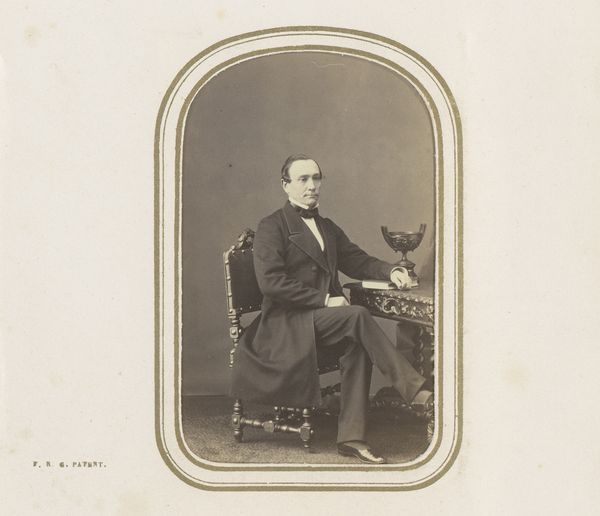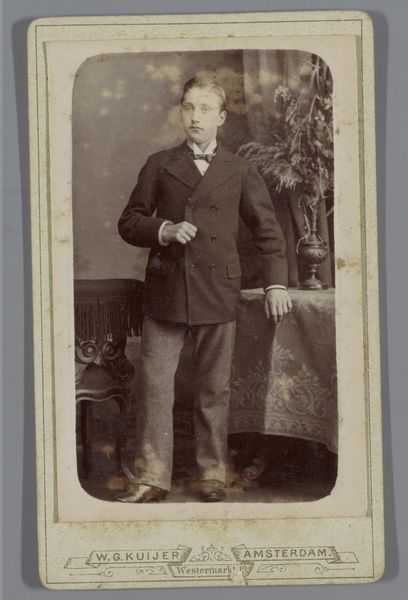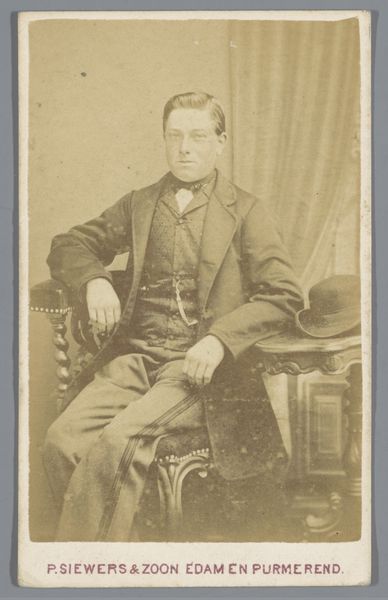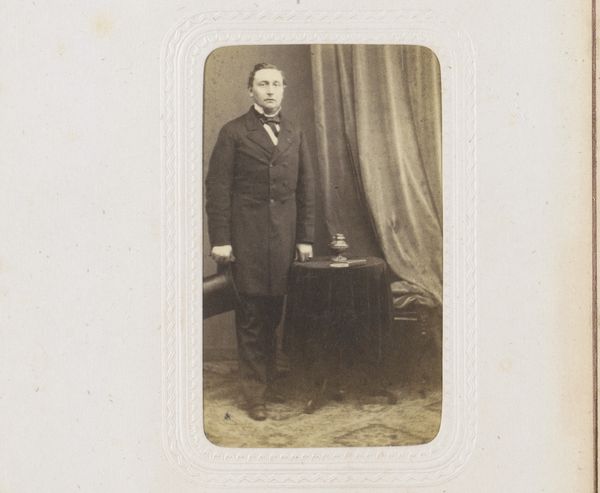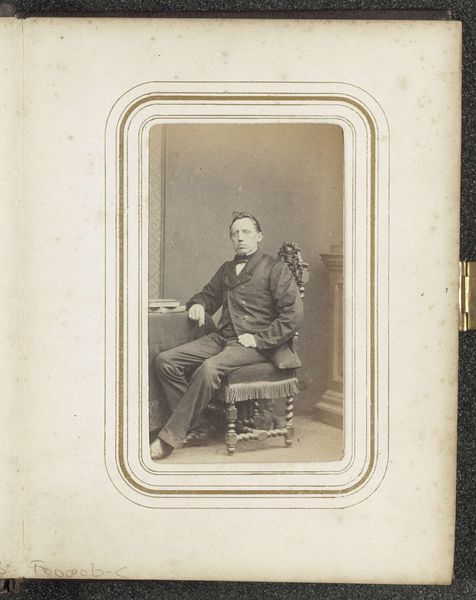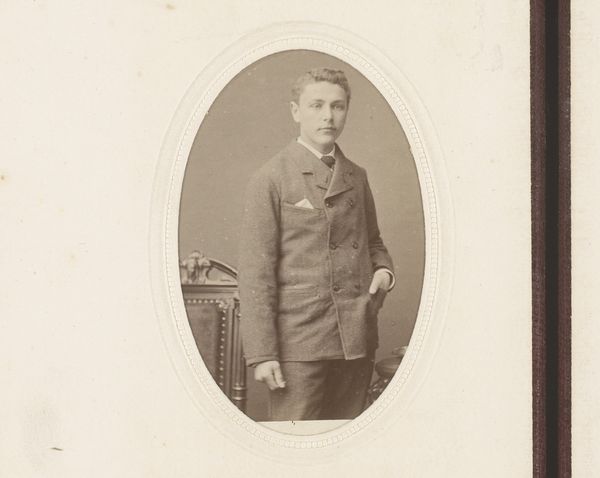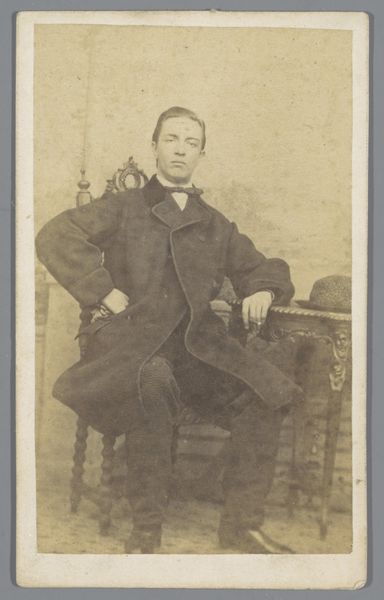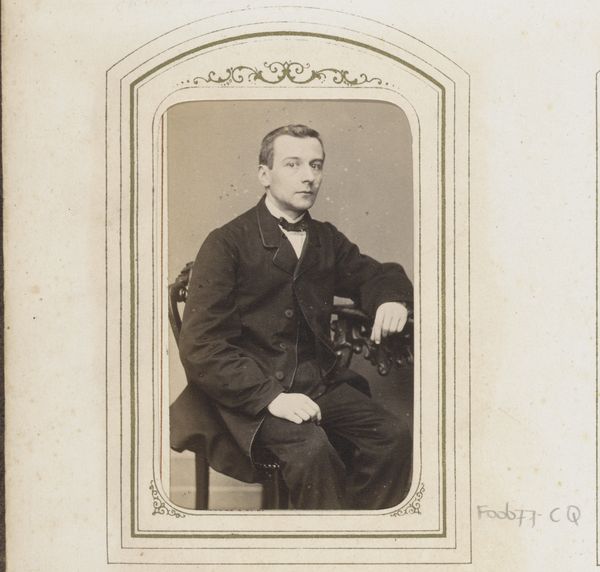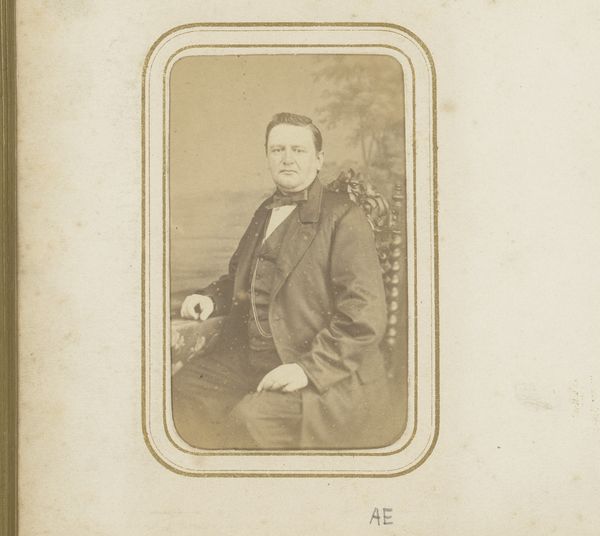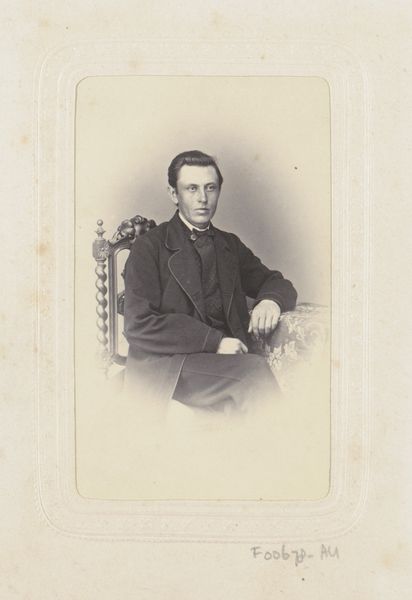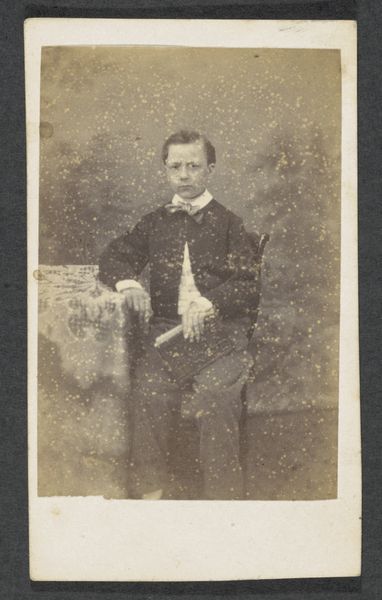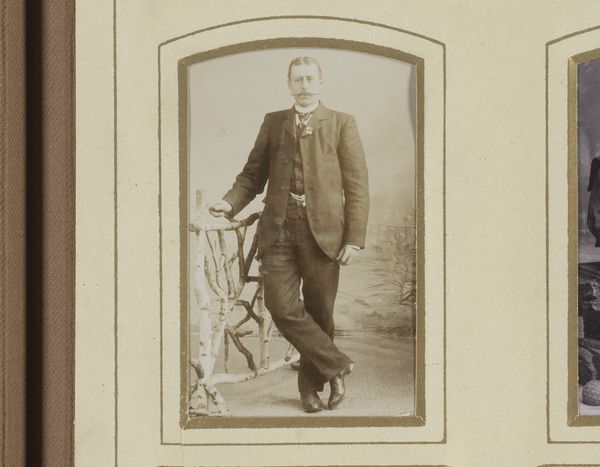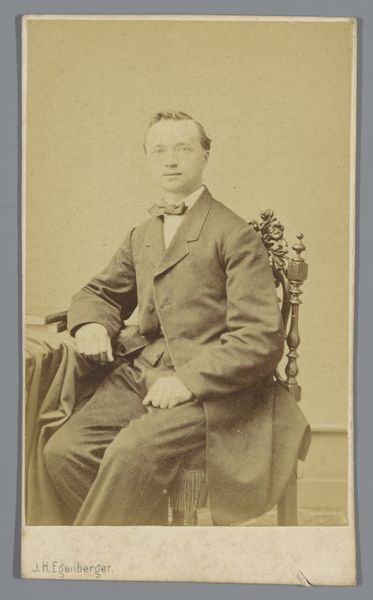
photography
#
portrait
#
photography
#
19th century
#
genre-painting
Dimensions: height 106 mm, width 58 mm
Copyright: Rijks Museum: Open Domain
This portrait of a young man was captured by Hendrik Hermanus Roelse using photographic techniques common in his time. The image, likely a silver gelatin print, embodies a shift in artistic representation brought about by industrial advancements. The portrait’s material influence lies in its ability to capture a moment with a level of detail previously unseen, and it's small size meant it was easily shared and circulated. Made through a chemical process involving light-sensitive materials, its production involved a darkroom, specialized equipment, and technical know-how, reflective of the burgeoning photographic industry. The rise of photography democratized portraiture, making it accessible to a wider segment of society beyond the elite. In this way, photography offered a new means of self-expression and documentation, capturing the essence of everyday life and challenging traditional artistic hierarchies. By understanding the materials, making, and context surrounding this photograph, we gain insight into the social, economic, and technological forces shaping artistic expression in the 19th century.
Comments
No comments
Be the first to comment and join the conversation on the ultimate creative platform.
